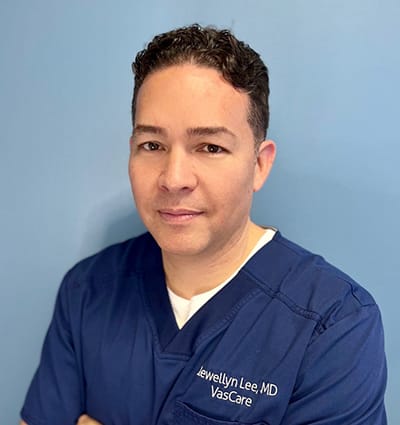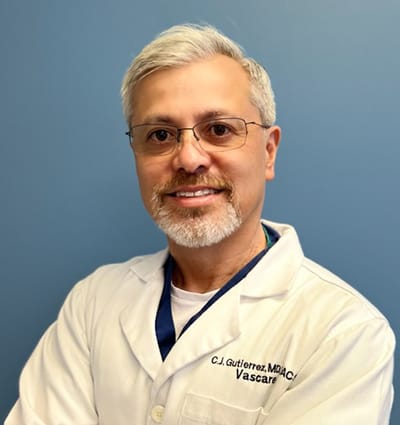
Spider veins are damaged blood vessels, visible just below the skin’s surface. Usually appearing red, blue, or purple in color, spider veins can resemble the shape of a system of roots or a spider’s web, which is how they get their name.
VasCare offers residents of the Beaumont and Corpus Christi areas various forms of treatment options to treat spider veins, from conservative therapy to minimally invasive procedures that deliver lasting results.
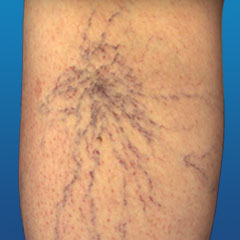
What Are Spider Veins?
Spider veins, or Telangiectasias, occur when the blood vessels just below the skin are damaged creating a cluster of web-like lines that are red, blue and/or purple in color. Spider veins develop most often in the face or legs, though they can show up throughout the entire body. There generally aren’t any symptoms with spider veins, other than their cosmetic appearance, but they can cause burning, cramping and/or itching in legs.
While the term spider veins is a good way to think of the appearance of this condition, spider veins aren’t actually veins. They are damaged small blood vessels – capillaries, venules and arterioles – that connect larger blood vessels in the circulatory system.
Occasionally spider veins are an early sign of chronic venous insufficiency (CVI).
What Are The Differences between Spider Veins and Varicose Veins?
Spider veins and varicose veins are different forms of a condition known as venous insufficiency. Venous insufficiency arises from damaged or weakened valves within the veins, impeding the efficient return of blood to the heart.
While spider veins are a result of damaged small (less than 3 mm) blood vessels, varicose veins are twisted, enlarged veins. In contrast to the flat appearance of spider veins, varicose veins look swollen or bulged under the skin. Varicose veins are also more likely to cause symptoms including pain and aching in the legs, skin irritation, and leg cramps. Spider veins can appear anywhere on the body, especially on the face, feet, or behind the knee, while varicose veins are more common on the legs.
Spider veins and varicose veins share some similar causes and risk factors, so it is common for people with spider veins to also develop varicose veins.
What Causes Spider Veins?
Spider veins are the mildest indication of venous reflux, a vein disorder in which the valves that control blood flow become damaged (known as valvular incompetence), allowing blood to flow backwards and pool. Genetics, hormonal changes in the body, injury and trauma, and connective tissue diseases such as rheumatoid arthritis can all lead to the formation of spider veins.
Women are especially susceptible to developing spider veins due to the production of a hormone called progesterone. A side effect of progesterone is that it relaxes the blood vessel walls, which can play a role in the development of spider veins. Men also produce progesterone, but women produce it at a significantly higher rate due to its involvement in pregnancy and menstruation.
If any of the following apply to you, you may be at a higher risk for developing spider veins:
- Genetics — A family history of venous disease increases your risk
- Gender — Women suffer from venous disease more frequently than men
- Obesity or weight gain — Excessive weight can accelerate the progression of venous disease
- Pregnancy — Elevated blood volume, hormone levels, and pressure on the leg veins due to an enlarging uterus
- Prolonged standing or sitting — Certain occupations and sedentary lifestyles due to inactivity of the muscles that help pump blood back to the heart
- Injury or surgery (especially near the pelvis) — Blood flow through a vein becomes restricted
- Blood clot — Blood flow through a vein becomes blocked
What Are The Symptoms Of Spider Veins?
Besides their visible cosmetic appearance, spider veins may itch or burn. Other symptoms may include pain and aching, fatigue, heavy or restless legs, and leg cramps. These symptoms can indicate other underlying disorders in veins that can’t be seen from the surface of the skin.
In more serious cases, treating spider veins may be part of a more comprehensive therapy involving the veins that are not visible.
Do Spider Veins Need to Be Treated?
In and of themselves, spider veins pose no serious medical problems, only cosmetic issues. If you have developed spider veins and don’t wish to treat them, it’s still recommended to see a doctor to test for other possible underlying medical issues that may have developed.
How We Diagnose Spider Veins
To diagnose spider veins, one of our providers at VasCare will perform a physical exam, as well as cover any relevant personal and family medical history with you. We will look for signs of other vascular issues that may be affecting blood flow, such as Chronic Venous Insufficiency (CVI), to make sure you receive the right care.
If signs of vascular issues exist, you will be given a diagnostic venous Doppler ultrasound. This noninvasive test uses sound waves emitted from a handheld device passed over the skin to allow your physician to determine exactly which veins need to be treated based on their blood flow. It can also identify blood clots.
Your Treatment Options at VasCare
At Vascare we can address spider and varicose veins in a number of different ways.
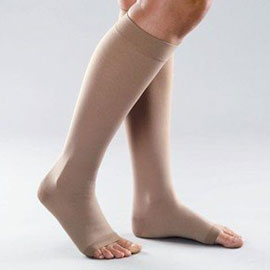
Conservative Therapy
Treatment usually begins with changes in lifestyle – exercise, weight loss, and leg elevation – and the use of compression stockings or socks. While they will not reverse vein damage, compression stockings can alleviate the symptoms of vein disease.
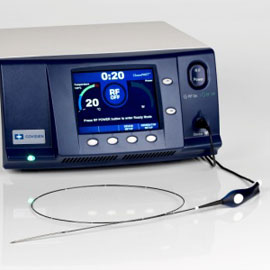
Endovenous Ablation Therapy
Venefit Targeted Endovenous Therapy is a quick and painless minimally invasive treatment that resolves varicose veins and other vein diseases through the use of radiofrequency (RF). RF heats the collagen in the vein walls, which causes the vein to shrink, seal shut, and ultimately be harmlessly absorbed by the surrounding tissue.
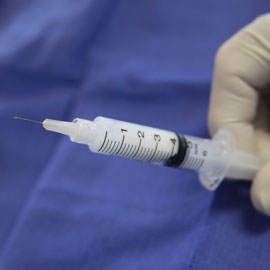
Foam Sclerotherapy
Foam Sclerotherapy treats severe larger veins with a simple injection of a chemical agent or sclerosant, which irritates the problematic vein and encourages it to close.
VenaSeal
The VenaSeal procedure uses a specially formulated medical adhesive to close the diseased vein, rerouting blood to healthier veins and providing symptom relief. VenaSeal boasts a nearly a 93% vein closure rate after one year. VasCare’s own Dr. Llewellyn Lee helped launch VenaSeal and train physicians all over the U.S. on treatment protocols.
Cosmetic Treatments
When spider veins are causing you embarrassment but not pain, VasCare can still help, using liquid injection sclerotherapy.
Similar to foam sclerotherapy, liquid injection sclerotherapy is a minimally invasive procedure that heals the venous reflux through a chemical agent or sclerosant. The sclerosant causes the diseased vein to close and the blood to reroute to healthier veins.
Cosmetic treatments may require several sessions, may result in some permanent skin discoloration, and aren’t guaranteed to work in all patients.
